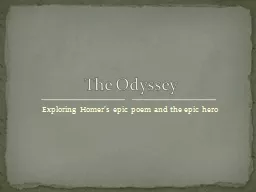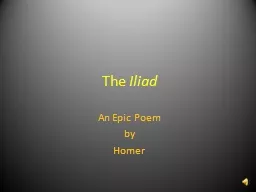PPT-The Real Buzz: Feasting and Partying in the Homeric Epic
Author : briana-ranney | Published Date : 2016-03-18
By Natalie Diehl Erik Ronning Kathryn Addonizio Nestors Cup 735720 Greek found in Ischia Isola d Napoli Campania Italy Greek Inscription ΝΕΣΤΟΡΟΣΕΥΠΟΤΟΝ
Presentation Embed Code
Download Presentation
Download Presentation The PPT/PDF document "The Real Buzz: Feasting and Partying in ..." is the property of its rightful owner. Permission is granted to download and print the materials on this website for personal, non-commercial use only, and to display it on your personal computer provided you do not modify the materials and that you retain all copyright notices contained in the materials. By downloading content from our website, you accept the terms of this agreement.
The Real Buzz: Feasting and Partying in the Homeric Epic: Transcript
Download Rules Of Document
"The Real Buzz: Feasting and Partying in the Homeric Epic"The content belongs to its owner. You may download and print it for personal use, without modification, and keep all copyright notices. By downloading, you agree to these terms.
Related Documents














